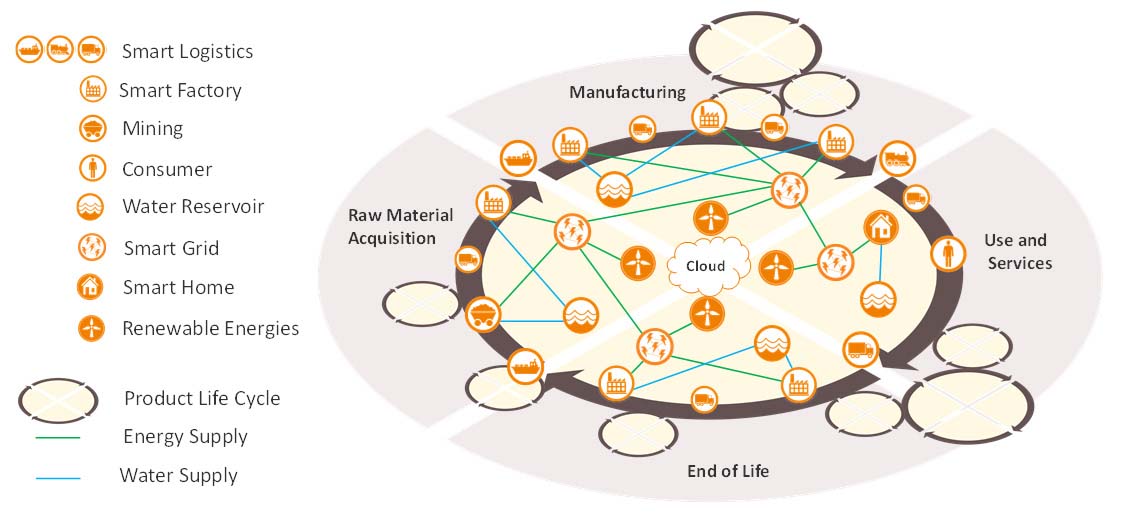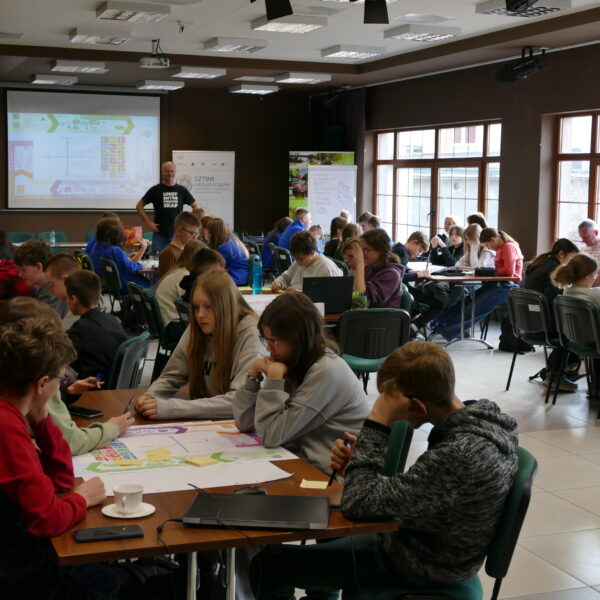

Sustainability in SME manufacturing: speaking of opportunities
This is the third of four short articles with an overview of drivers for digitalization, opportunities for SME manufacturers in Industry 4.0 and obstacles for Industry 4.0 adoption in SME industry sector.
With Industry 4.0 SME manufacturing can take a step forward to more sustainable value creation. On the basis of intelligent cross-linked value creation modules, the allocation of resources, products, materials, energy and water can be achieved in a more efficient way (Kagermann, Lukas, and Wahlster, 2015). Besides these environmental improvements, Industry 4.0 can contribute to the realization of sustainable industrial value creation on all three dimensions of sustainability: environmental, social and economic. There are two perspectives of Industry 4.0: macro and micro (Stock & Seliger, 2016).
Opportunities for sustainable manufacturing for the macro perspective of Industry 4.0

A macro perspective of Industry 4.0. Source: Stock & Seliger, 2016
Business Models. Industry 4.0’s new business models are in a big extent driven by the use of smart data for offering new services. Sustainable business models fundamentally contribute to solving environmental and social problems (Bocken et al., 2016). In addition, sustainable business models are characterized by long-run competitiveness (Schaltegger & Wagner, 2011). This means, selling the functionality and accessibility of products, instead of selling only tangible products, will be a leading concept (Stock & Seliger, 2016).
Value creation networks. In Industry 4.0, the cross-linking of value creation networks offers new opportunities for closed-loop product life cycles and industrial symbiosis realization. This enables the efficient coordination of the material, product, energy, and water flows through the product life cycle and between factories. Closed-loop product life cycles contribute to remanufacturing or reuse of products during life cycles. Industrial symbiosis leads to cooperation between different factories for trading and exchanging products, materials, energy, water, and smart data on the local level (Chertow, 2007; Stock & Seliger, 2016).

The micro perspective of Industry 4.0. Source: Stock & Seliger, 2016
Equipment. The manufacturing equipment is a capital good and can have a long phase of use up to 20 or more years. Retrofitting allows an easy and cost-efficient way of upgrading existing manufacturing equipment with sensor and actuator systems and with the related control logic to indicate heterogeneity of equipment in factories (Spath et al., 2013). Retrofitting extends the life cycle of the manufacturing equipment and this can contribute to the economic and environmental dimensions of sustainability. This improvement is a long-cost alternative to the procurement of new manufacturing equipment and is especially suitable for SME (Stock & Seliger, 2016).
Humans. In Industry 4.0, humans will still play the role of organizers of value creation (VDI/VDE-GMA, 2015). There are three sustainable approaches for dealing with the social challenges of Industry 4.0:
- Increasing training efficiency for workers by combining new ICT technologies (virtual reality head-mounted displays with Learnstruments);
- Motivation increasing and creativity fostering by implementing new CPS-based work organization and design approaches (flow theory concept implementing, gamification concept implementing to support decentralized decision-making) (Engeser et al., 2005; Stock & Seliger, 2016);
- Extrinsic motivation increasing by the implementation of individual incentive systems for the worker (considering the smart data within the product life cycle to provide individual feedback mechanisms).
Organization. In a smart factory, a sustainable-oriented decentralized organization is focused on the efficient coordination of products, materials, energy, and water, considering the dynamic constraints of the CPS (of the smart logistics, smart grid, the self-sufficient supply or the customer). This resource efficiency concept was described as one of the biggest advantages of Industry 4.0 (Kagermann, Lukas, and Wahlster, 2015; Plattform Industrie 4.0, 2015; Stock & Seliger, 2016).
Process. Industry 4.0’s approach to the sustainable design of products is focused on the realization of closed-loop life cycles for products. This is done by enabling the reuse and remanufacturing of the product or by applying principles of cradle-to-cradle. Some approaches are focused also on the well-being of the consumers’ designing (application of identification systems) (Larsson et al, 2015; Stock & Seliger, 2016).
Macro and micro perspectives of Industry 4.0 offer SMEs opportunities for more sustainable value creation, long-run competitiveness, closed-loop product life cycles, industrial symbiosis, the extended life cycle of the manufacturing equipment, efficient coordination of products, materials, energy, and water. All these opportunities of Industry 4.0 can significantly move the manufacturing industry of SMEs towards a more sustainable one.
Author: Yulia Marchuk



